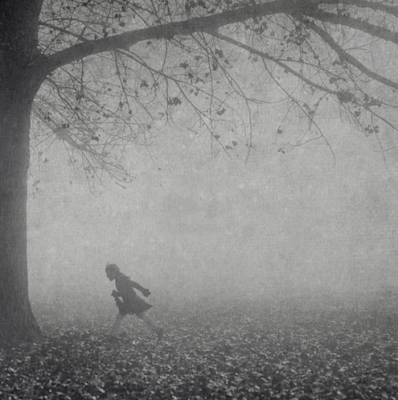"On November Eve the dead are abroad, and dance with the fairies" p 118
Fairy and Folktales of Ireland.
To me, this sounds lovely... yet, as long as the fairies are good ones. It also reminds me of what my grandmother told my cousin when her kitten disappeared; she told her to not be sad, because her kitten must be across the Bay having tea... We were also told that if we were not good, the gypsies would take us away. Lighthearted scaring when we were misbehaving was a familiar thing in my childhood. This reminds me of this time of year, Halloween, my favorite time of year!
Why we celebrate this time of year goes back 2,000 years ago to Ireland (and the present-day United Kingdom and Northern France) inhabited by the Celts.The Celts, who fought naked, impaled their enemies' heads on their swords as they road naked into battle (as told to me by my uncle, and confirmed by my Irish History Encyclopedia) sacked Rome in 387-86 BC (p. 63 Charles Doherty,
How The Celts Influenced Ireland; The Encyclopedia of Ireland, 2000). Evidence of Celtic culture, the La Tene, can be found in Ireland dating back to the 3rd Century BC.
Pagan culture existed before the Celts in Ireland, yet the Celts get all the credit! (they were pretty intense as you can tell by the aforementioned nakedness and head impaling).
Celtic culture began to settle in Ireland. As the bountiful summer crops were harvested, and the once green plants began to hibernate as the months grew cooler and dimmer, the people of Ireland felt an end to the year. Soon, they too would hibernate. As months of longer nights and shorter days approached vines withered and dried up, all the land began to look dead. This seemed symbolic of human death and it was believed that during this time, the boundary between the living world and the dead/spiritual world became breached. October 31 was believed to be the mark of the time when the souls of those who had died could come back to the human world. An extra place would be set at the dinner table for passed loved ones and candles would be lit along the roads to help guide the spirits back to the spirit world.
During this time, the priests of the Celts, Druids, could make predictions for the coming year. Huge bonfires were lit, costumes made of animal heads and skins were worn, and offerings were burnt to ensure blessings for the new year. This harvest/prayer time was known as Samhain (sow-en), Summer's End. After the bonfires, the indoor hearth fires were re-lit with remnants of the bonfire to ensure blessings during the cold, dark months of Winter.
You may think the Celts heathens, un-Christian, yet, Celtic culture and the culture of Christianity intermingled, (as inextricably as a Celtic knot, hahaha) but, seriously, you can see an example of this in the Celtic Cross- the circle for the symbol of the Sun and the Cross, for Jesus, or Christianity.
In 1000 AD the Catholic Church moved their observance day, originally May 13, of the martyrs and saints to November 2 and sanctioned it All Soul's Day,(i guess they it thought sounded "chuch-ier" than Samhain.) The new observance day was also called All-hallowmass; the night before this day, November 1, was called All Hallow's Eve and eventually Halloween.
ORIGINS OF TRADITIONS:
costuming: during Halloween, as days grew cold and dark sooner, it was believed that ghosts, some very bad, roamed the Earth. To avoid being recognized as a human, while traveling over the moors and through the woods, people would wear scary masks.
trick-or-treating ancient, pagan practice was to leave food and wine out for roaming spirits in the time of Samhain. Later, this practice was replaced by the Church. In England, during All Soul's Day's parades, impoverished people would go around and beg for something to eat. They would be given little cakes called "soul cakes" in return for a promise that they would pray for their giver's passed relatives.
jack-o-lanterns: no Irish history would be complete without some drinking! There was once a man called Stingy Jack who invited the Devil to come drink with him (the Devil is never very far when whiskey spirits are raised). Of course, Jack didn't get his name by paying for his drinks, so he dared the Devil to turn himself into a coin that Jack could use for their drinks. Once he did so, he put the coin in hos pocket next to a silver cross, preventing the Devil from turning himself back. He made the Devil promise him that he would not bother him if he turned him back, nor take his soul if he died. The Devil promised and so Jack turned him back. A year later, Jack tricked the Devil again into climbing a tree for a piece of fruit. Once up there, Jack carved the sign of the Cross in the tree so that the Devil could not come down. Once he got the Devil to promise that he would not bother Jack for another ten years, though it seems Jack is bothering the Devil!, he let the Devil come down.
When Jack died, the Devil would not take his soul, for all the annoying trickery, nor would God allow him into Heaven. So God sent Jack out into the darkness giving him only a burning lump of coal to light his way. Jack put the coal into a hollowed out turnip for a lantern and then became known as Jack of the Lantern, or as the Irish say, Jack o' Lantern. The people of Ireland, Scotland and England carved scary faces into potatoes and turnips and placed in their windows to keep away Jack and all his tricks. God forgive 'em.
www.History.com













